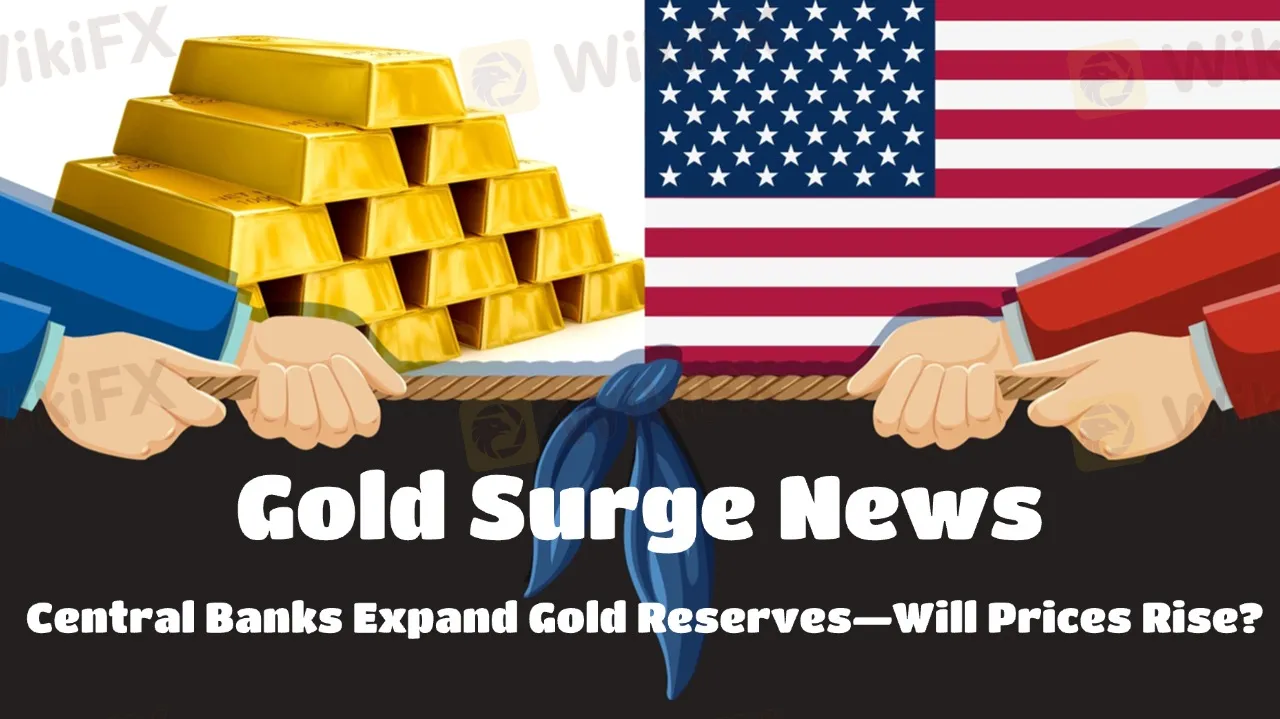简体中文
繁體中文
English
Pусский
日本語
ภาษาไทย
Tiếng Việt
Bahasa Indonesia
Español
हिन्दी
Filippiiniläinen
Français
Deutsch
Português
Türkçe
한국어
العربية
Gold Surge News: Central Banks Expand Gold Reserves—Will Prices Rise?
Abstract:Central banks have purchased over 1,000 tons of gold annually for three consecutive years, and 2024 is no exception. However, the key question remains: as demand for gold continues to rise, will its price keep increasing?

According to data from the World Gold Council (WGC), since 2022, central banks gold purchases have remained at historically high levels. In 2024, total purchases amounted to approximately 1,045 tons. Although slightly lower than the previous year, this figure is still significantly higher than the annual average of around 550 tons between 2010 and 2023. The trend of central banks increasing their gold reserves has been evident since 2010, particularly following the global financial crisis.
In 2024, Poland, Turkey, and India were the top buyers of gold, purchasing 90 tons, 75 tons, and 73 tons, respectively. Meanwhile, after a six-month pause, China resumed its gold purchases in November 2024. Rising geopolitical risks and uncertainties have prompted central banks to shift their reserves from the U.S. dollar to gold, reinforcing the trend of “de-dollarization.”
Will Gold Prices Continue to Rise?
Given global economic uncertainties, including inflationary pressures, geopolitical risks, and the potential decline of the U.S. dollars dominance, gold demand is expected to keep growing. According to the latest WGC survey, 69% of central banks believe that gold purchases will increase over the next five years. As global central banks continue accumulating gold, prices are likely to remain high and may even rise further.
Considering the current and future demand trends, investors may need to rethink their gold allocation, particularly as central banks continue purchasing gold. For those anticipating further global economic uncertainty, gold remains a valuable asset to hold.
Disclaimer:
The views in this article only represent the author's personal views, and do not constitute investment advice on this platform. This platform does not guarantee the accuracy, completeness and timeliness of the information in the article, and will not be liable for any loss caused by the use of or reliance on the information in the article.
Read more

FIBO Group MT5 Cent Account with Ultra-Leverage up to 1:5000 for Beginners
FIBO Group's MT5 Cent account offers a low-deposit Forex trading account with ultra-high leverage up to 1:500 for testing strategies on MetaTrader 5.

Global Brokers Vs. Indian Rules: Why They Struggle in India
RBI issued a warning last year against 75 forex brokers. Those brokers are globally popular and regulated in other countries, but they are banned in India. Only few brokers even have physical offices located in India. So, why do global brokers face so many challenges in entering the Indian market?

Major Risks Associated with AuxiliumFX: You Need to Know
Risks are attached to every broker you choose—but the question is, do you know what those dangers are? Today, we’ll explain the risks associated with AuxiliumFX—and how this broker could potentially turn you into a victim.

Discover 5 Benefits of Trading with Trive FX Broker
When you decide to finally start trading, the first thing you need to do is choose a broker. While selecting a Forex broker, you should know the benefits you’ll receive by choosing that particular one. In this article, we will discuss the 5 benefits of Trive.
WikiFX Broker
Latest News
Tokenized Stocks: Innovation or Just Another Wrapper?
XTB Launches Tax-Advantaged Retirement Accounts in Poland
Zaffex Broker Review
ECB Ends Easing Cycle, But The Eurozone Crisis Is Just Beginning
Amazon deploys its 1 millionth robot in a sign of more job automation
Gold Rush Again: What's Driving the Bullion Market Crazy Ahead of US Jobs Data?
10-year Treasury yield remains higher despite weak ADP jobs report
Blueberry Markets Revamps its Website
The private sector lost 33,000 jobs in June, badly missing expectations for a 100,000 increase, ADP says
MT4 and MT5 Platforms - Helping Traders Up Their Forex Trading Game
Currency Calculator


